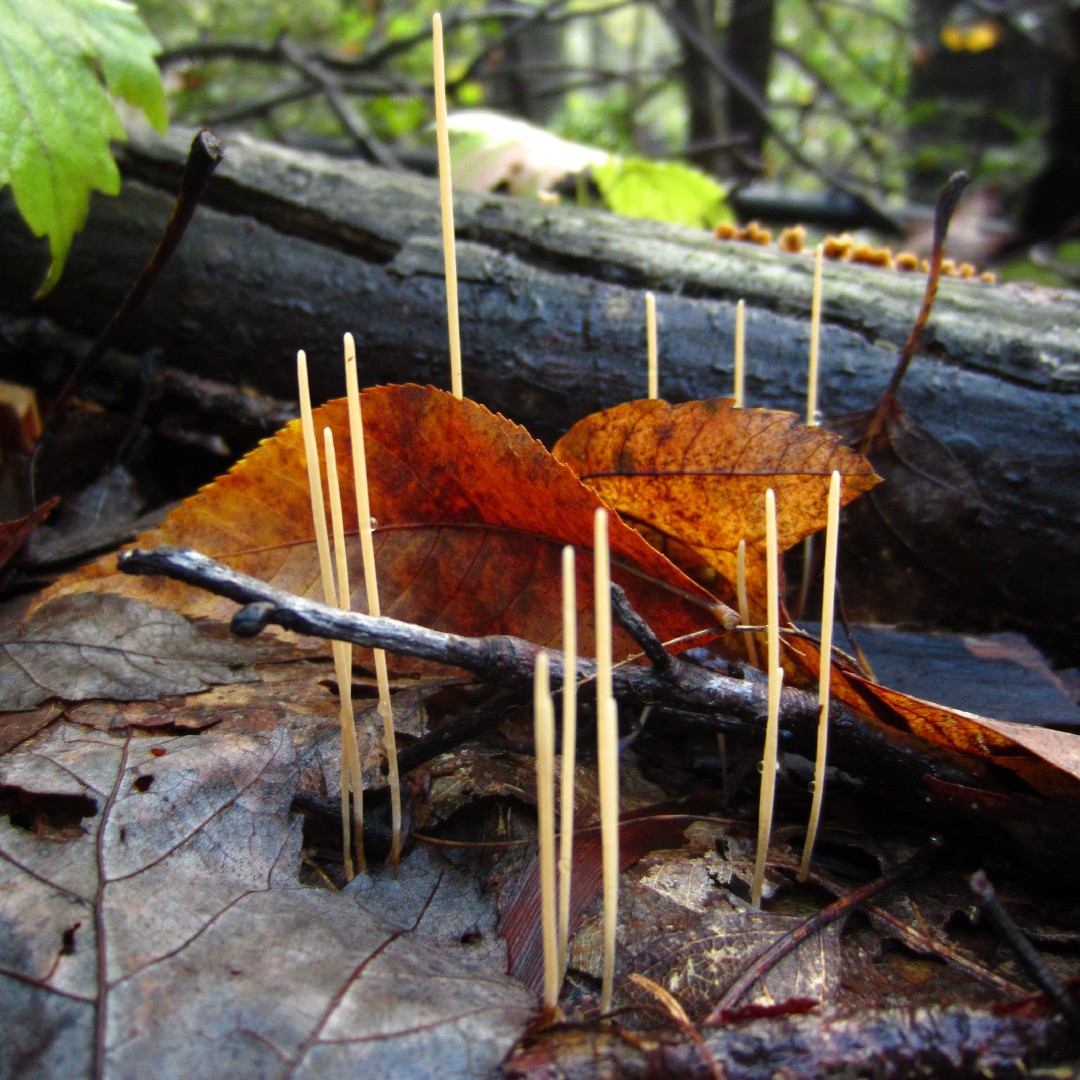Typhulaceae
Scientific name: Typhulaceae
Typhulaceae
Scientific name: Typhulaceae
 Photo By Karen (oldmanofthewoods) , used under CC-BY-SA-3.0 /Cropped and compressed from original
Photo By Karen (oldmanofthewoods) , used under CC-BY-SA-3.0 /Cropped and compressed from original Description
The members of the typhulaceae family share a common appearance in that they are typically slender upright fungi. They are classed as club fungi, since many species of this type of fungus are club-shaped. However, most species in this family are far more slender and delicate. You are most likely to see these fungi growing on forest floors on dead wood and leaf litter.